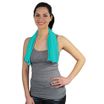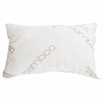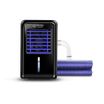- Product Description
- About Warm & Safe
- Size Chart
The 12V Heat Layer Shirt has been a project we have been working on for a few years to get it right. The Heat Layer Shirt has glove plugs built in, and can be used with the Single or Dual Remote Heat-troller. All Our Heated Gear should be used with an optional Heat-troller Remote Control Heat-trollers. The Heat Layer has 7 areas of heat. The chest, arms, neck, upper back and lower back. Each zone adjusted for how it fits to the body.
The Heat Layer Shirt warms you in seconds, yet is designed to feel like part of you. The high tech, moisture wicking stretch fabric it's designed with keeps the garment tight against your body for optimal heat transfer while reducing bulk. The garment is durable, hand washable, and extremely lightweight. We deliver more heat in more places than any other garment. Our base layer garment design offers the greatest heat transfer performance with the least amount of bulk. Our heat panels have soft and flexible alloy/silicon shaped for the maximum heat transfer. All this efficiency means less insulation and power is required to deliver and retain the desired heat to you BELOW your regular clothes instead of using more power to force heat through them. It is simply the most versatile, high tech and efficient heated garment ever designed. Packs into its included zippered pouch.
All Our Heated Gear should be used with an optional Heat-troller.
Features:
- Heat where you need it. Our panels are configured right where you want the heat to be for optimal heat transfer. Through rigorous testing, we have developed two different panel placement patterns based on the two different male and female designs. It shouldn't be surprising that due to differences in shape and bodies, the optimal panel placements are different for men and women.
- More control over the heat. How much warmth you need is dependent on multiple factors such as outside temperature and what layers you are wearing below or on top of the garment. Coupled with the Remote Heat-trollers, you have a true off and a true full on with 0~100% heat control via a dial.
- Only the best goes in to the Heat Layer. High tech, wicking, stretch fabric construction with different cuts from men and women 3M's Thinsulate (70-80 g/m2) , YKK zippers , Alloy/Silicon "softheat" heating element , Connectors and wires rated to -40°C/-40°F (for durability and longevity)
- High Tech, moisture wicking stretch fabric There is simply no better fabric out there for this type of garment. Like a fitted shirt, the stretch fabric keeps the garment, and most importantly the heat panel, flat against your body for the optimal heat transfer. This high level of heat transfer performance means less power/heat is needed to achieve that ideal warmth. Besides the fit, the fabric is designed for both comfort and to wick away any sweat or moisture. Users often note that besides feeling the heat, the garment fits so well you don't notice it's there.
Women's Heated-Neck Long Sleeve Heat Layer This version of the Heat Layer has 9 areas of heat. Two panels in the chest, wo along the side of the chest, two in the upper arms, a heated collar, one panel on the back and one on the lower back. It also has connections at the end of the sleeves for gloves or glove liners.
Our Women's 12V Heat Layer Shirt numbers:
- 2.8 Amps
- 5.0 Ohms
- 38 Watts at 13.8V
Warm & Safe was born out of pure necessity. Back in the winter of 1993 company founder and world traveler Mike Coan found himself uncomfortable and cold while motorcycle touring through the Vosges Mountains between Germany and France. The multiple layers he was wearing were bulky and were simply not enough to keep him warm. This would lead to his first encounter with heated riding gear. At that time, such gear was extremely limited, unreliable and in some cases, dangerous. After purchasing some for himself, it was clear that the designers were not riders and there was room for improvement in many areas.





















































 Like Us on Facebook
Like Us on Facebook
